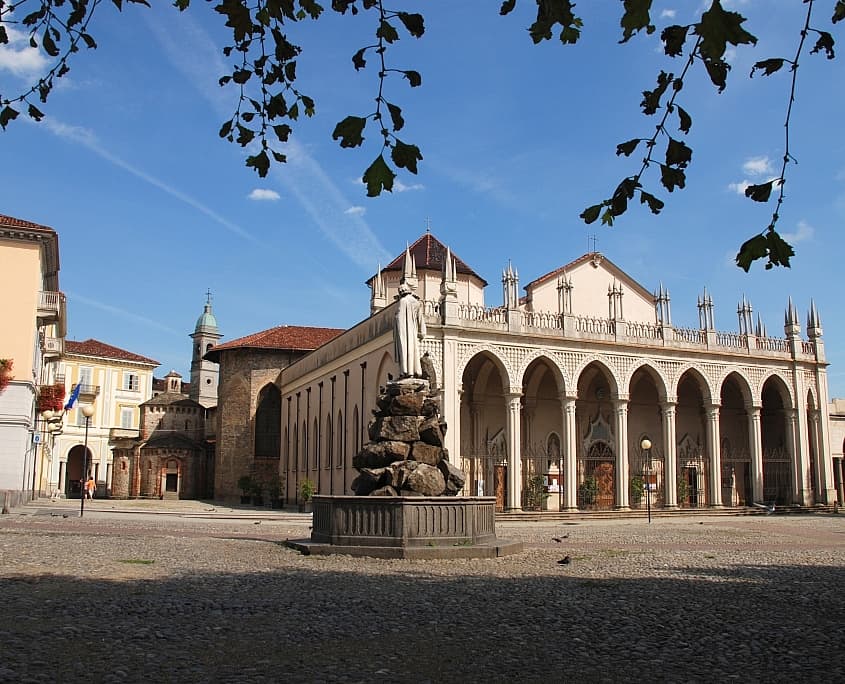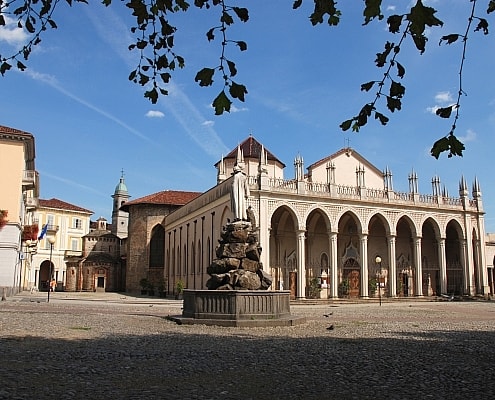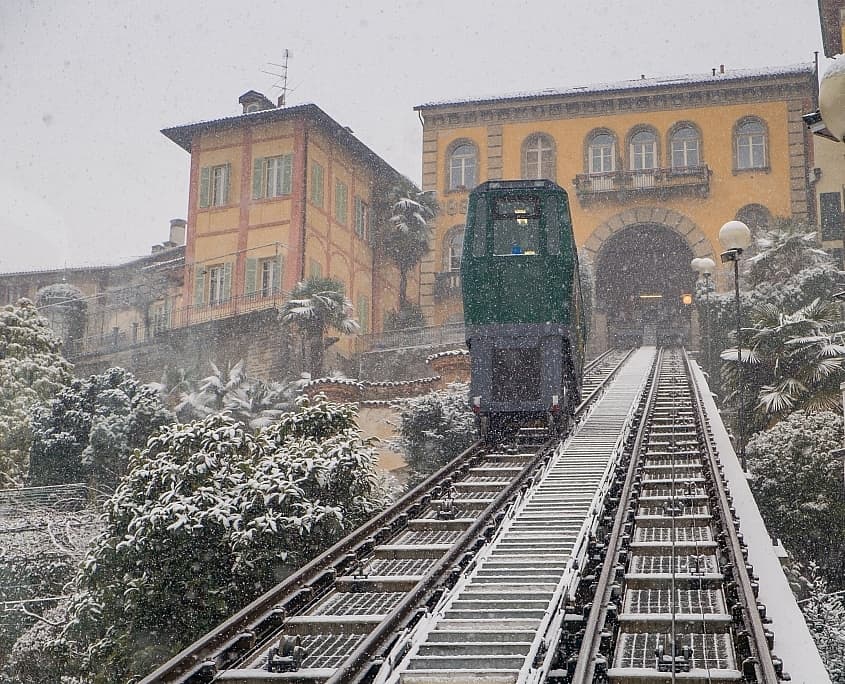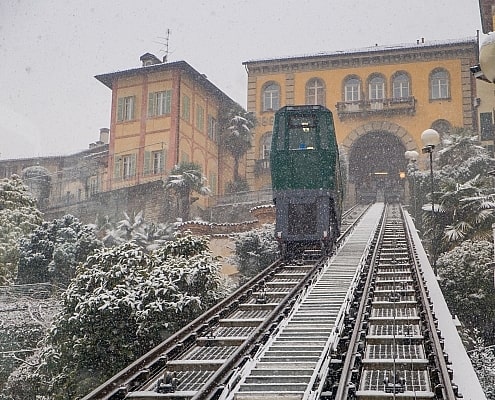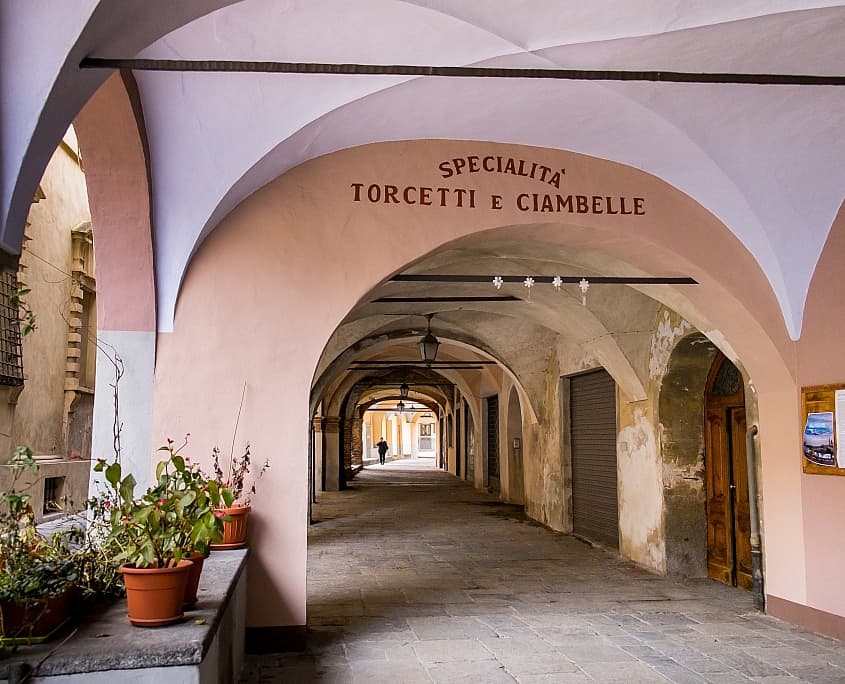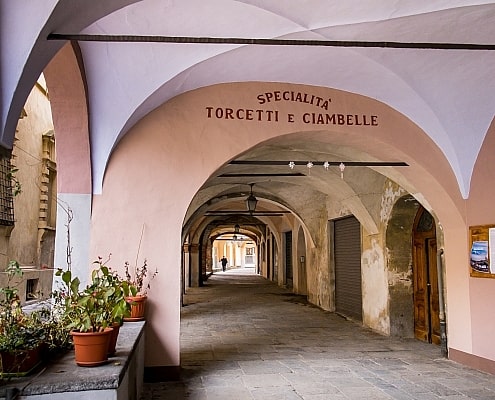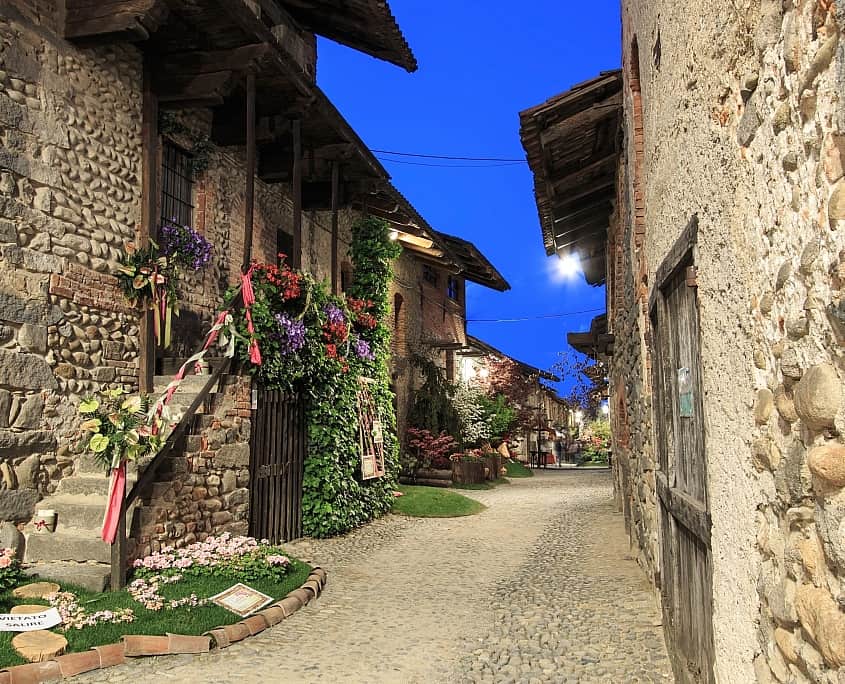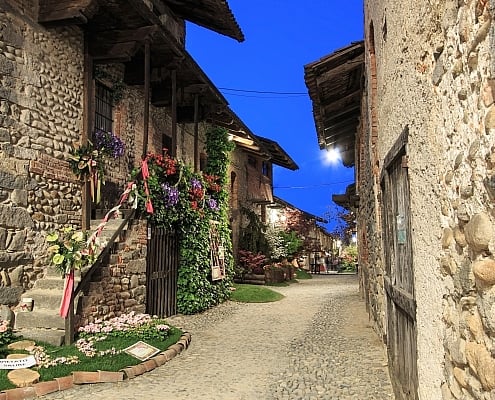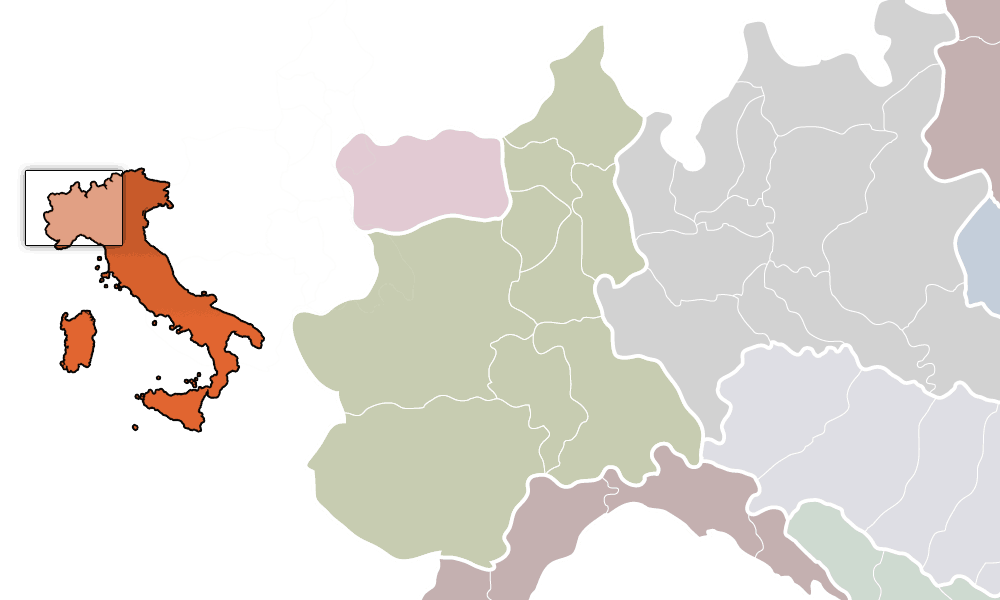Biella is located southwest of Lake Maggiore at the foot of the Alps. Biella has traditionally been a stronghold of the textile industry, especially wool processing. To the north of Biella is the Sanctuary of Sacro Monte di Orapa. It belongs to the Sacri Monti, the “Holy Mountains of Piedmont”. These places of pilgrimage were declared a UNESCO World Heritage Site in 2003. The historic upper town Piazzo of Biella, which can be reached by cable car, is particularly attractive for visitors.
What To See In Biella?
Santuario Mariano di Oropa at Sacro Monte
The pilgrimage church of Santuario Mariano di Oropa, about 12 km north of Biella, is a destination for pilgrims. The Santuario is dedicated to the Madonna Nera and is located on the Sacro Monte di Oropa, one of the sacred mountains of northern Italy, which is a UNESCO World Heritage Site.
The Historic Piazzo in the Upper Town
In the upper town, the historic area of Piazzo with its medieval atmosphere is worth seeing. Biella Piazzo can be reached by funicular. In the Piazza Cisterna there is the Palazzo della Cisterna and the city gate Porta d’Andorno from the 14th century. Also worth mentioning are the Gothic church of San Giacomo from the 13th century and the octagonal tower, which was built in 1519, and beautiful noble palaces from the 15th and 16th centuries.
The Lower Town of Biella
The lower town is the real center of Biella. In the cathedral square is the Biella Cathedral, dedicated to Saints Santa Maria Maggiore and Santo Stefano. The construction of the cathedral began around 1400. Inside the cathedral you can admire beautiful frescoes and paintings. The baptistery was built on the remains of a Roman tomb in the 10th century. The Basilica of San Sebastiano, built in1504, houses paintings by Piedmontese artists. The museum is in the cloister of San Sebastiano.
The Palazzo Scaglia was the residence of the Scaglia extended family in the 16th century.
In addition to archaeological material, the city museum also contains remains of frescoes from the 9th century as well as paintings, ceramics and glass from the 18th century.
The Porta della Torrazza arch was built in 1780 by the municipality to commemorate the four visits of the Savoy royal family.
History and Economy
In prehistoric times, Celts and Ligurians already lived along the rivers. Tools and jewelry from the Iron Age were found on the hill of the Parco della Burcina. Fishing, hunting and sheep farming were the sources of food and income in pre-Christian times. Gold deposits in the Elvo River attracted gold washers in the Bessa, the plain of Biella, as early as the Roman era.
In 826, Biella, then called Bugella, was donated by the Emperor Ludwig the Pious, ruler of the Roman Empire and son of Charlemagne, Count Busone. In the 10th century, Alemanni, Lombards and Franks populated the area and built city walls to protect themselves from the barbarians. The city grew around the then church of Santo Stefano within the city walls. The baptistery was built during this time. The bell tower of the Santo Stefano church has been preserved.
The medieval residential area forms the heart of Biella. Cistern square and the church of San Giacomo from the 12th century are typical buildings from the Middle Ages. Numerous stairs and a cable car lead to the upper town. Already in the 13th century, the college of weavers and wool traders was mentioned in Biellas statutes. This tradition makes Biella a leading center for wool spinning and knitting and weaving. The fine fabrics from Biella are still sought after worldwide.
In 1859, Garibaldi freed Biella from the siege of Austrian troops; After the Rattazzi decree, it became the capital of the district of the same name in the province of Novara. It became part of the Province of Vercelli in 1927 and finally an autonomous province in 1992.
In October 2019, Biella was honored as a UNESCO Creative City.
The Street of Wool
Important companies in the wool industry come from Biella, including: Names like Ermenegildo Zegna, Lanificio Fratelli Cerruti, Fila, Borgosesia. Wool processing has a long tradition in Biella. Collegio dei Lanaioli and Weber was founded in 1245. The entrepreneur Massimo Sella bought a building from 1695 on the banks of the Cervo River in 1835, which he converted into a wool mill. In 1866 Giovanni Battista Rivetti Badone founded the Rivetti Spinning father and son factory in Strona. With the introduction of the new mechanical looms, the first modern wool mill was created.
The towns of Biella and Borgosesia were connected by a path that has been known as the Street of Wool for centuries.
The wool sheep were bred on the higher pastures. Their wool was brought to the eastern valleys of Biella, the Valsessera and the Strona valley, where the wool was processed. The finished woolen fabrics, scarves and knitwear were brought to Borgosesia, where they were marketed. The Street of Wool runs over a network of about 50 kilometers, on which there were workers’ settlements, power plants and numerous textile factories. In the first decades of the last century, the area was a modern industrial area with social facilities such as kindergartens, schools, hospitals, and recreational areas.
Most of the former factories no longer exist, such as the Serra knitwear factory in the Strona Valley or the Bozzalla Pel wool mill in Valsessera.




